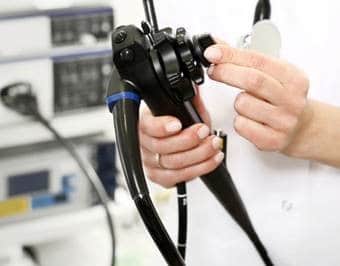 Flexible endoscopes can cost a hospital a lot of money – and cost patients valuable time – when going through avoidable repairs. Repairing flexible endoscopes often requires expensive maintenance from third-party organizations, delayed or canceled cases due to unusable scopes and procurement of expensive loaner scopes to handle the required workload. Spending time and effort to avoid these costs is an important part of running an efficient and profitable endoscopy operation.
Flexible endoscopes can cost a hospital a lot of money – and cost patients valuable time – when going through avoidable repairs. Repairing flexible endoscopes often requires expensive maintenance from third-party organizations, delayed or canceled cases due to unusable scopes and procurement of expensive loaner scopes to handle the required workload. Spending time and effort to avoid these costs is an important part of running an efficient and profitable endoscopy operation.
Typically, hospitals view endoscope downtime as an unavoidable reality in running an endoscopy practice. However, this doesn’t have to be so. As this article by Kate O’Rourke at Gastroenterology & Endoscopy News discusses:
“Roughly 85% of endoscope repairs are avoidable,” said Louis Mariani, an endoscope service expert at Olympus. The distal end is the most fragile part of the endoscope, accounting for nearly 45% of all endoscope damage. The distal end houses a protective cover, charge-coupled device, camera, light guide lenses, and nozzle for air and water.
“Damage to any of these components can cause image issues, light issues, and even harbor patient debris,” Mr. Mariani said. “A broken lens cover or nozzle entering a patient can be a very serious concern, because patient debris can be lodged into a break or breach of material.” A lint-free cloth is key for cleaning endoscopes; gauze should never be used to wipe the distal end, which can potentially cause lint to enter the instrument, he said.
The main cause of damage to the distal end is impact, with the floor or peripheral equipment. “Impact can occur during transport, inspection or maintenance, and can have serious consequences,” said Eric Smith, an Olympus endoscope support specialist. The air/water nozzle has a small opening that flushes water and air over the objective lens, and this can be deformed or slightly serrated by impact.
… Minimizing fluid invasion, which accounts for nearly 25% of endoscope damage, can save a facility thousands of dollars. To prevent this type of damage, users should perform a leak test by submerging the entire endoscope in water. “Once the scope is submerged, you want to rotate both the knobs, so you are going to go up, down, left and right, to ensure the bending section isn’t leaking,” Mr. Mariani said. “Most leaks occur in the flexible section of the scope’s distal end.”
…Insertion tube damage accounts for 10% of endoscope damage and manifests as buckles, dents and lacerations. Improperly positioning the scope can easily cause the insertion tube to buckle. “We live by the ‘see something, say something’ rule,” Mr. Mariani said. “If you see anyone putting unnecessary pressure on the insertion tube, speak up in a kind manner and explain what can happen when the insertion tube is compromised.”
…Damage to the biopsy channel accounts for another 10% of endoscope damage. This channel is surrounded by other channels, fibers and cables, so any direct damage or puncture can damage the surrounding components. “Imagine if an open forceps was retracted through the biopsy channel. You can see how that could cause some serious damage,” Mr. Mariani said. Small punctures in the channel show up during a leak test as tiny bubbles that can be missed, and scrapes and scratches in the channel pose many challenges to cleaning.
…Proper storage is key to keeping endoscopes functional. Endoscopes should hang freely in a closed, well-ventilated storage cabinet to avoid damage and facilitate drying. Cabinets should have a HEPA filter, support the endoscope control body, allow the distal end to hang freely, avoid crowding, and provide a place to store accessories or supplies. “If you don’t have one, make sure a written policy and procedure for cleaning cabinets is developed,” Mr. Smith said.
Roughly 8% of repairs fall into the other category and include chemical damage, which can be prevented by following the manufacturer’s instructions for removing chemical residue. Applying too much pressure or misaligning an endoscope when connecting it to a light source also can cause damage.
…Taking a few extra precautions in handling reprocessing, transport and storage of endoscopes can help facilities reduce repair expenditures while maximizing scope uptime. “Endoscopes are complicated instruments with complex parts and components,” Mr. Mariani said. “It is so important to routinely inspect your endoscopes for damage and functionality.”
Read the full article here: Avoiding the Broken Endoscope Blues
In order to reduce downtime with your endoscopes, you must first have access to data about your endoscope repair history and who is handling and damaging your scopes. Endoscope tracking systems such as iRIScope from Mobile Aspects track all transactions in the endoscope usage lifecycle including all incidences of repair. With this data, you can closely examine the causes of all of your endoscope repairs and trace back damages to individuals within the organization. You will be able to identify techs and physicians who need to be re-trained on how to properly handle scopes in a way that minimizes damage to delicate parts like the distal tip or the channels. You will even be able to use the data to understand which scopes are being used most often and those that are being underutilized. With this data, you can plan to balance the load on each of your scopes so that the same few scopes aren’t being used over and over again, reducing the need for costly repairs. Having access to the data and using it reduce the incidence of endoscope repairs can mean a much more efficient and profitable practice and happier patients.
